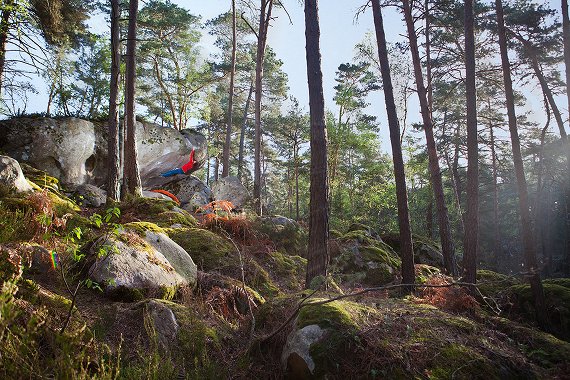Three days can go by in the blink of an eye; especially when you are deep within a coma.
My eyelids were heavy and vision blurred as I pushed to force them open. All I could hear was rhythmic beeping and feel a dull pain in my right hand. Finally, forcing my eyes open, I woke with a new outlook along with my left humorous broken in three places, a titanium plate, six screws, a fractured wrist, massive contusions that would take months to heal, internal bleeding and brain swelling that had left me with a 50/50 chance for survival the night before.
Before the accident all I had wanted to do was climb and after the accident-nothing had changed, except that I couldn’t. My focus shifted and although I spent the first six months of my accident shaking to stabilize my shots, I quickly poured everything I had into capturing what I could no longer physically do.
It has been six years since that car crash on the long stretch of highway outside of Winnemucha, and a lot has changed, but the one thing that is constant is that I still love to go on climbing trips. Now, I just do so with the mindset into capturing the experience just as much as being an active participant. With jetlag being a small price to pay, photography has taken me further than I have ever expected, each year bringing new places to visit.
In the end, accidents happen, and it was an accident that put me in a coma and started me down the path to picking up my camera. I have been shooting for just over six years now and have loved every painful moment of it—from the freezing cold early mornings to the long approaches in (carrying a ridiculous amount of gear), and even the late nights when everyone is asleep while I’m still scanning the day’s shots.
Q&A with Anthony Lapomardo
How long have you been climbing?
I have been climbing for about 10 years.
Where did you start climbing?
I started climbing at a local gym after a friend was asked to take photos for the
gym’s brochures. At the time he was the photographer and would shoot rad photos when we went out, I never considered the places would switch.
How did you make the transition from climber to photographer?
A massive car accident basically jump started my need to find another way to enjoy climbing
How has photography changed your climbing?
Before that hospital visit, whenever I chose a climb to work on I always tried to inquire about the movement. It was important to me to work on something that flowed and wasn’t just a number to be grabbed. Every photographer I have learned from has a method, a way in setting up their shot. For me, the way I envision a shot is the same way in which I would gravitate towards a boulder problem, what is “the move” and generally it isn’t always the crux. First, I identify “the move” and body position it creates and then in my head, build the canvas outward from there, adding direction of the light, the shape/color of the boulder or wall and then sorting through the most unique angle to hopefully achieve a new outlook on a particular problem. One thing I have learned living in California, a lot of the lines have already been shot/published by some of the best: Thornburg, Epperson, Rich. This does not rule out shooting these lines, it only makes you work harder to find an original way to present them.
And, sadly, I climb a lot less and my friends continue to give me grief for it. I learned at the very beginning if I brought my shoes with me I would try to climb and then miss the shots I really needed to get. Delusion of focus is hard to combat when you see a rad problem you want to check out.
How has climbing influenced your photography?
Climbing is the only focus for me and my photography at the moment. Climbing basically gave me the tools to understand what I wanted to shoot and I am still learning the how. One of the best elements about both is that they are great excuses to go to beautiful places with great company.
Thank you to Matt Stark, F-Stop Gear, Dead Point Magazine, California Climber, and Mad Rock Climbing for the constant support.








